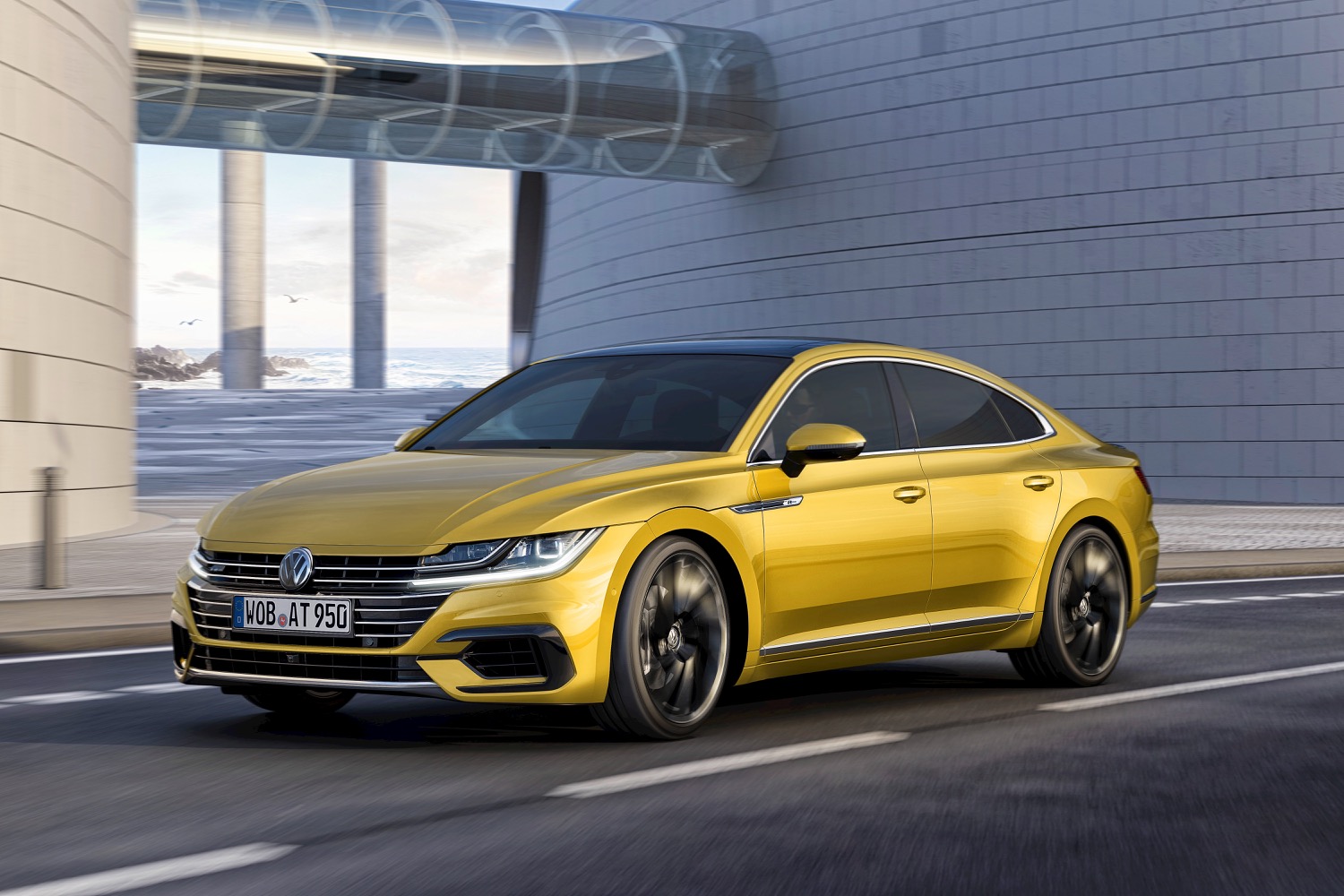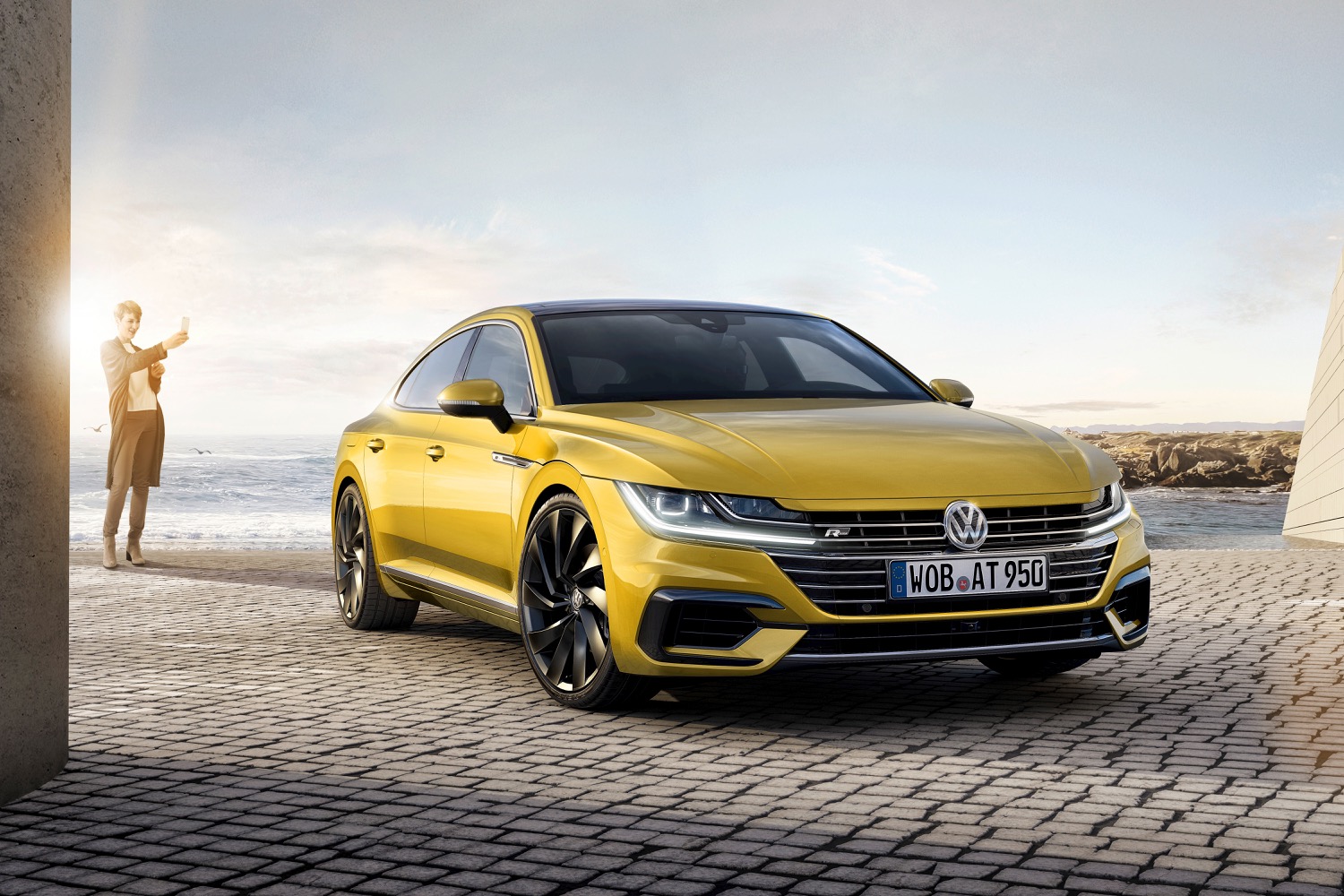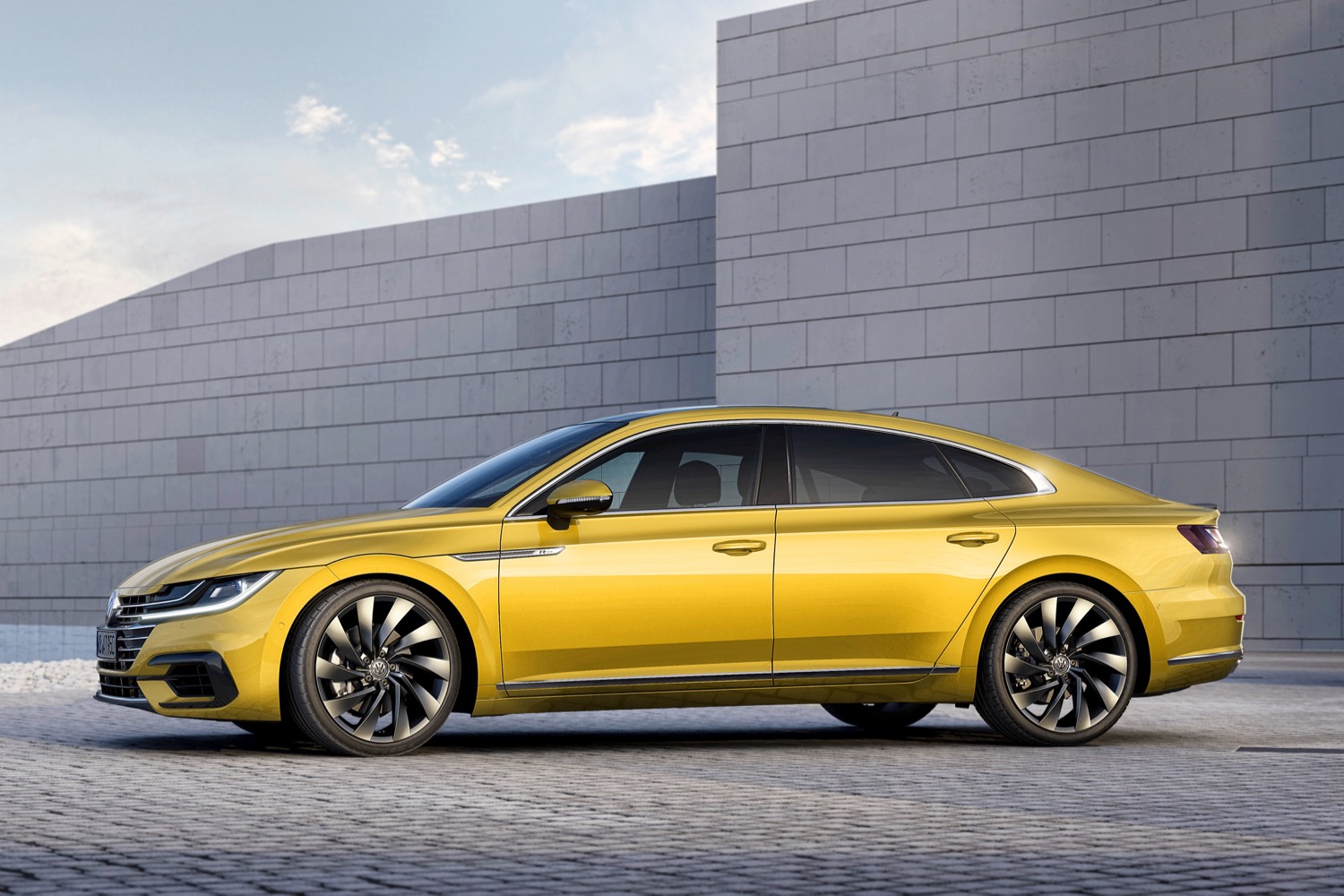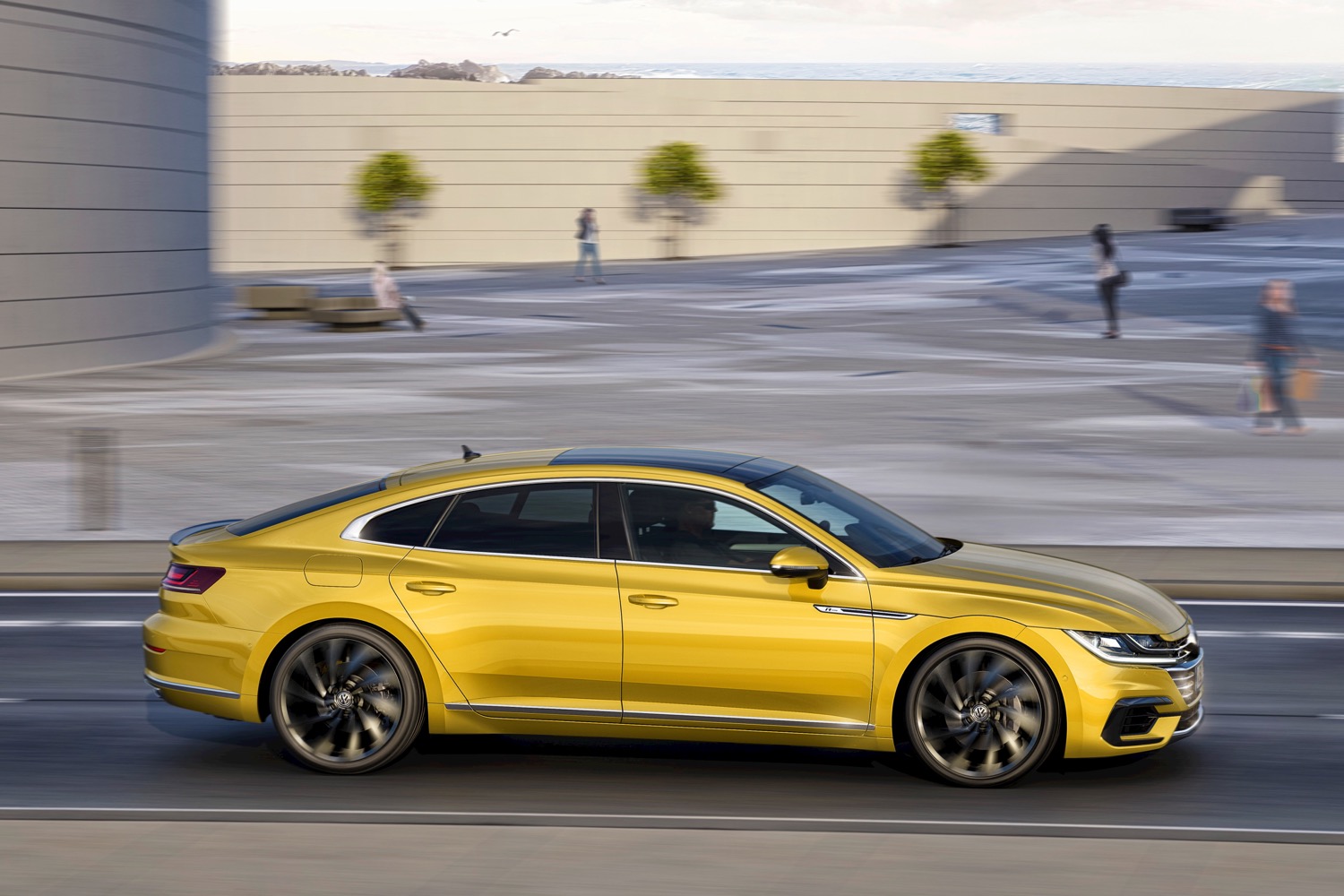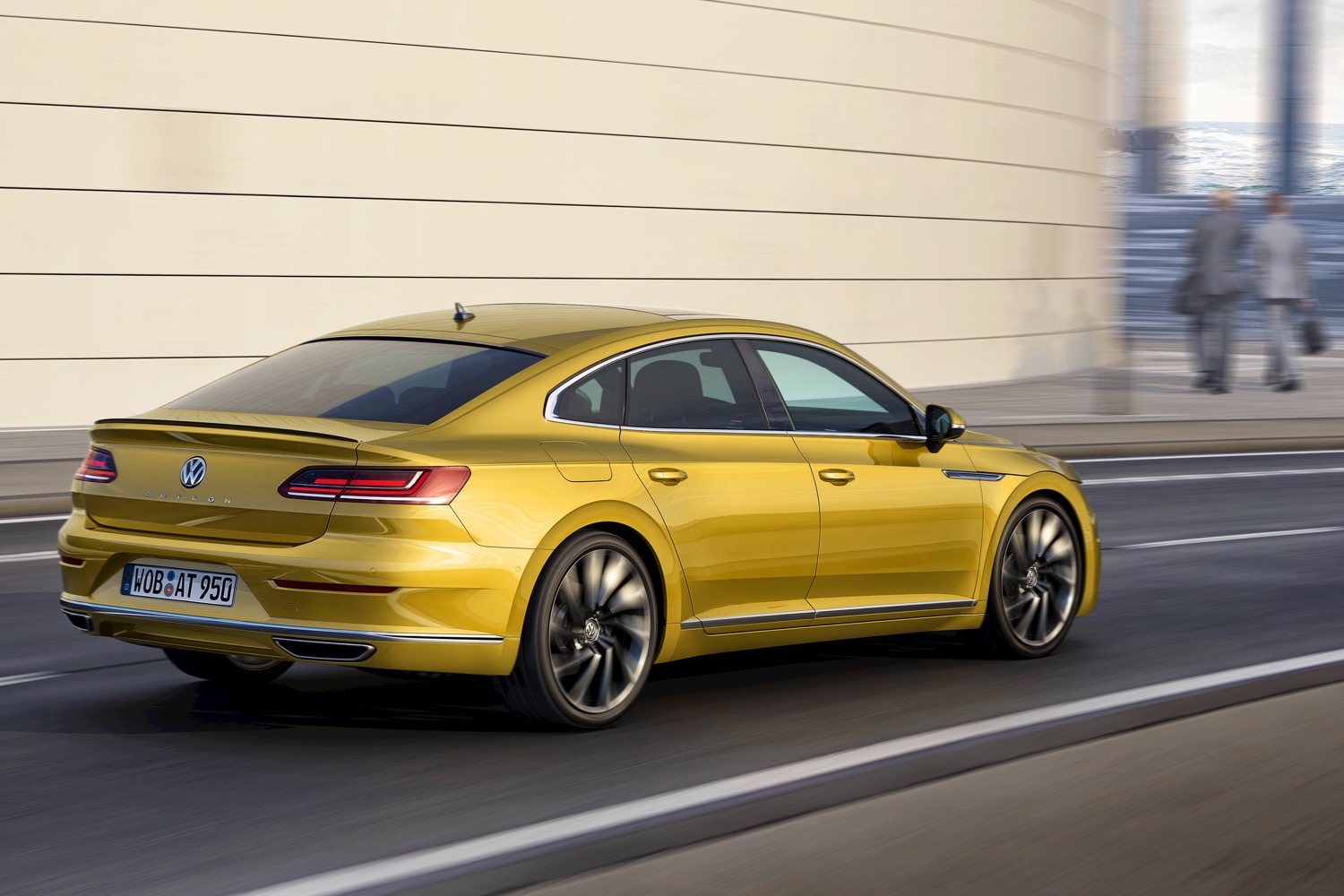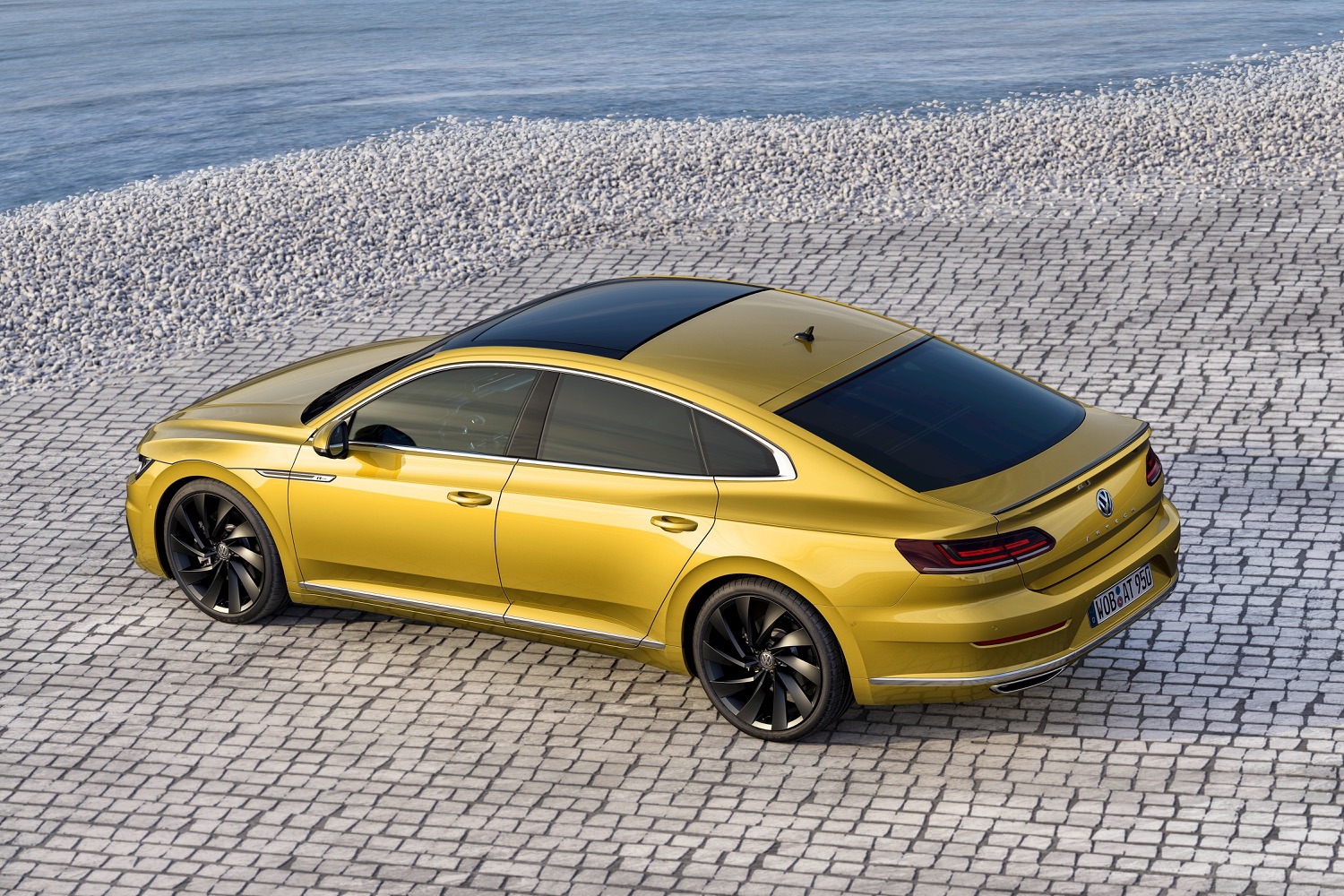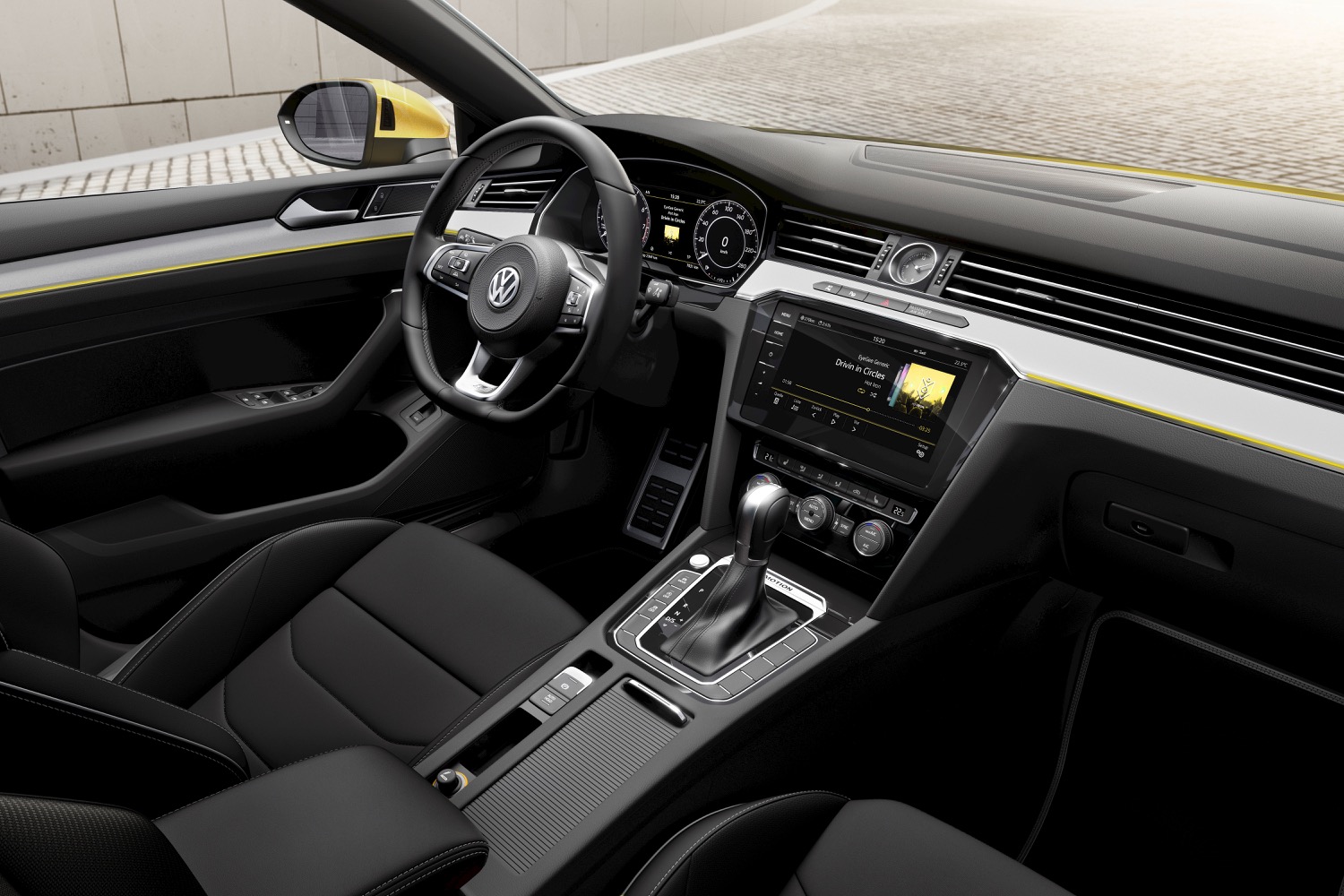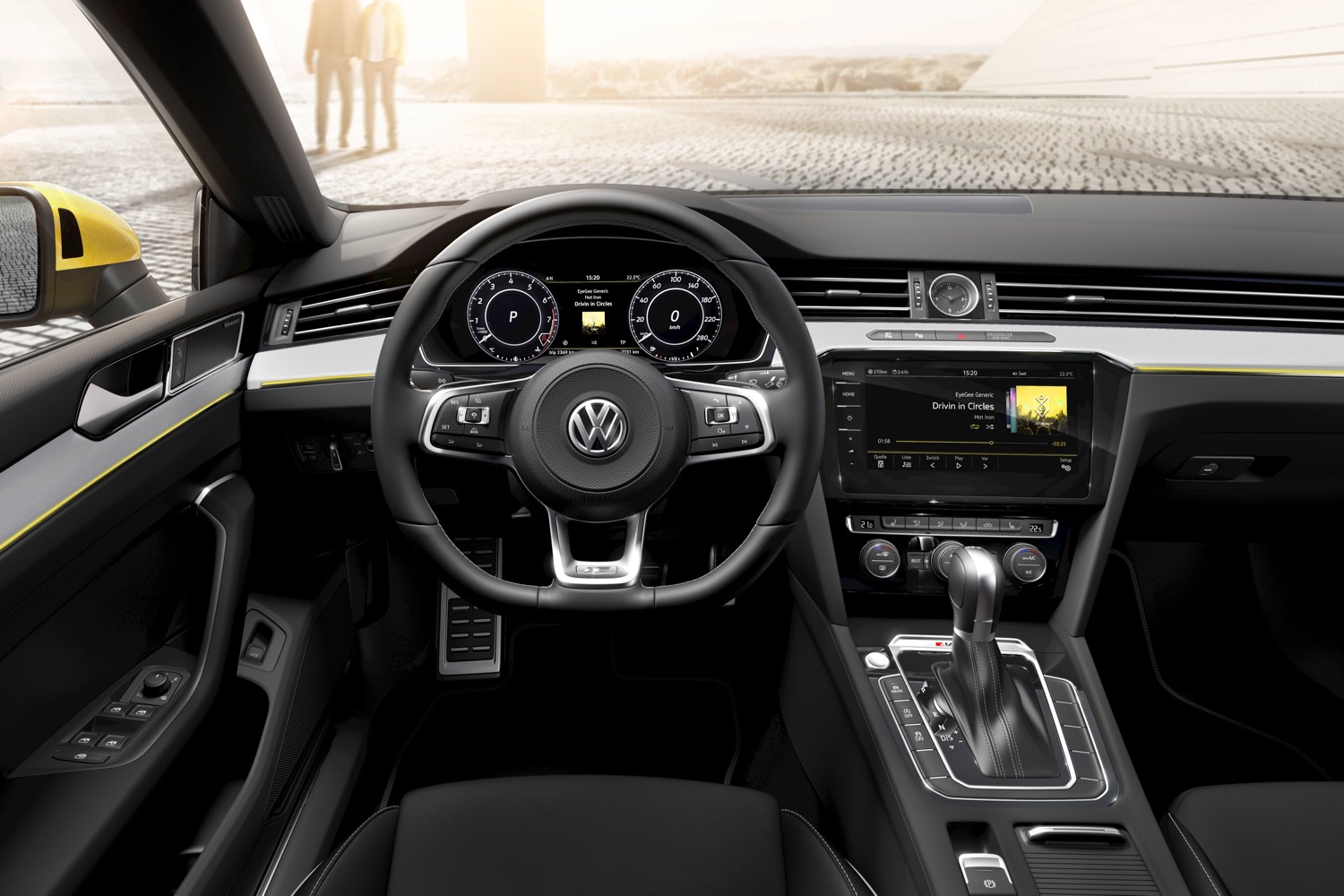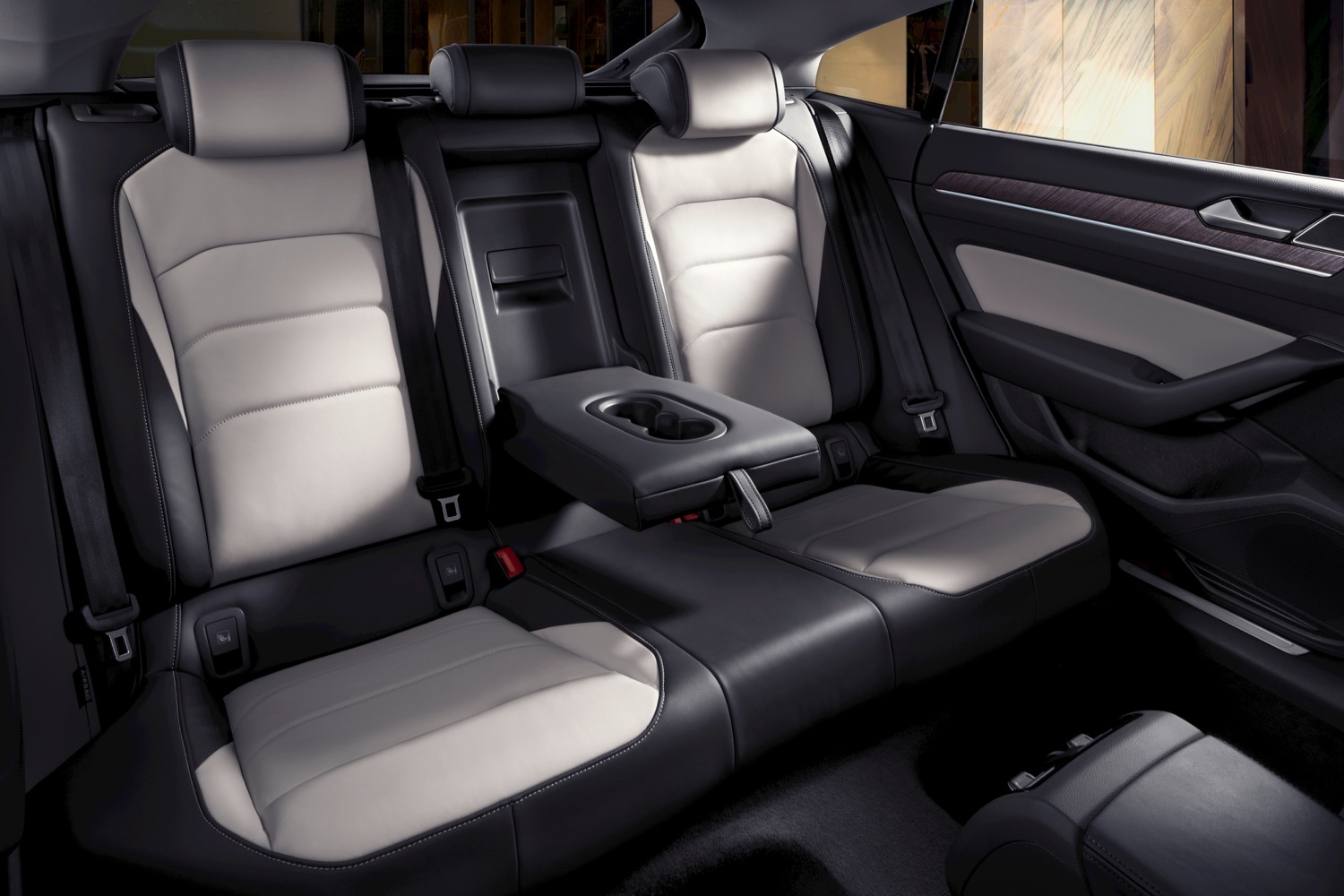Volkswagen clearly stated that it still believes in sedans when it introduced the redesigned 2020 Passat at the 2019 Detroit Auto Show. And it reaffirmed its commitment to the segment with the launch of the 2019 Arteon, a design-led, high-tech model positioned at the top of its portfolio in the United States. The car’s American launch was delayed, but it’s now on track to reach showrooms in April 2019.
One look reveals the Arteon is more stylish than any car Volkswagen — a firm known for conservative designs — has ever made. Its front end is dominated by a wide grille with horizontal slats that stretch into a pair of headlights underlined by LED accents. The fastback-like roof line reminds us of more expensive cars, like the Audi A7. It flows into a rear end with a small spoiler integrated into the trunk lid, and a pair of horizontal lights that emphasize the Arteon’s width. The swoopy sheet metal hides the MQB platform found under a wide variety of cars ranging from the Golf to the Atlas.
Inside, an 8.0-inch touchscreen embedded in the center stack displays the latest generation of Volkswagen’s infotainment system. The software is compatible with both Android Auto and Apple CarPlay, and it’s connected to an eight-speaker sound system. Midlevel models benefit from a digital, driver-configurable 12.3-inch screen named Digital Cockpit that replaces the analog gauges in the instrument cluster. Digital Trends tested this technology in Volkswagen and Audi models, and we found it useful because information like navigation directions are closer to the driver’s line of sight than when they’re displayed on the touchscreen.
Power for the Arteon comes from a turbocharged, 2.0-liter four-cylinder engine tuned to deliver 268 horsepower and 258 pound-feet of torque. An eight-speed automatic transmission and front-wheel drive come standard, but buyers can order Volkswagen’s 4Motion all-wheel drive system at an extra cost. Fuel economy and performance specifications haven’t been released yet. An electronic suspension that automatically adapts to road conditions comes standard to let drivers make the most of the 268 horses under the hood.
Fuel economy checks in at 22 mpg in the city, 31 mpg on the highway, and 25 mpg combined when only the front wheels receive power. Adding 4Motion lowers those figures to 20, 23, and 23, respectively.
Volkswagen split the Arteon lineup into three trim levels named SE, SEL, and SEL Premium. Pricing for the entry-level model starts at $35,845 before a mandatory $995 destination charge enters the equation. At the other end of the spectrum, the SEL Premium trim carries a base price of $44,495, a figure that places it on turf controlled by luxury cars like the Audi A5 Sportback. Every Arteon regardless of trim level comes with a generous six-year, 72,000-mile warranty that can be transferred from owner to owner.
Updated 3-28-2019: Added full information about the Arteon.
